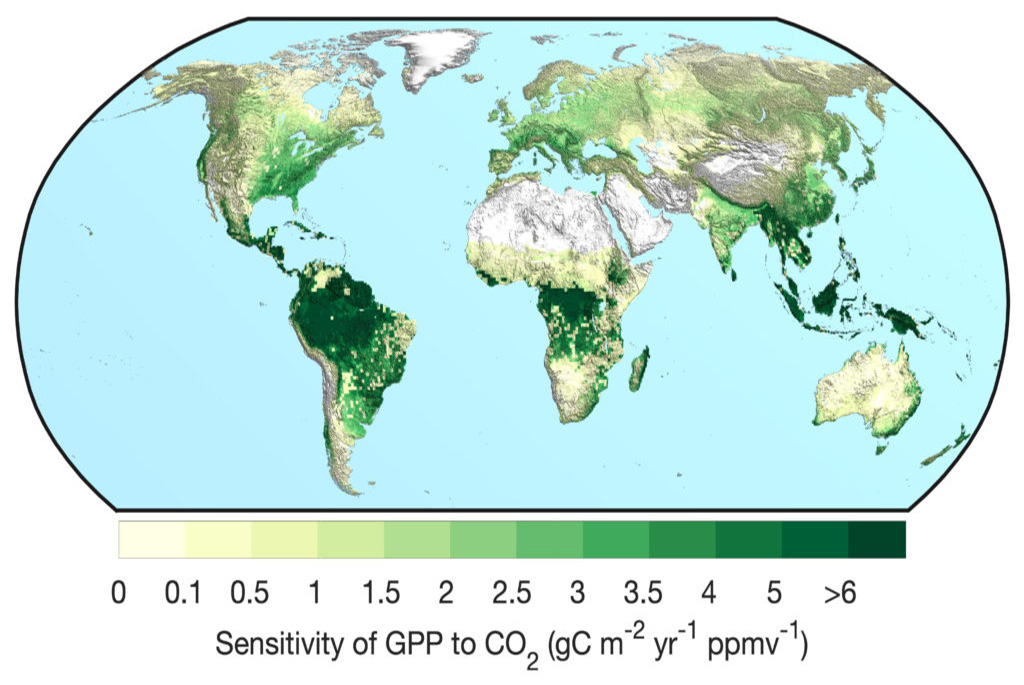But this CO2 fertilization effect (CFE) can be hard to determine without teasing out factors like the variability of temperature and moisture, or without information about how fluxes in the exchange of carbon dioxide between land and the atmosphere change over the long term.
For decades now through the Department of Energy-hosted measurement network that includes AmeriFlux, data has been collected at hundreds of sites globally using several-meter-tall eddy covariance towers that autonomously monitor this exchange in some of the planet’s most remote, difficult-to-access locations. Now Berkeley Lab researchers have analyzed data collected over 14 years at 68 of these sites, and are reporting the first direct observational evidence of the impact CO2 has on increasing photosynthesis in natural environments in a paper published in the journal PNAS this week.
“We were able to show that plant production [or growth] increased over time, with the CO2 fertilization effect accounting for 44% of the [plant production] increase and atmospheric warming accounting for 28% [of the plant production increase],” said Chi Chen, the paper’s lead author and Berkeley Lab postdoc fellow, “It is exciting that our framework is able to strictly define the CFE using math and diagnose the sensitivity of plants’ regulation of carbon and water fluxes to various biological and meteorological factors.”
Applying the same analytics to global satellite observations and meteorological data, the results suggest that the CFE is more than one-third stronger than previous estimates that were based on global vegetation models and plant photosynthesis data obtained by satellite, particularly in tropical forests. According to the authors, the results suggest that the CO2 fertilization effect likely had a critical role in the global carbon cycle in recent decades.


